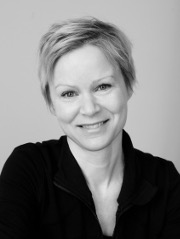This month, we sit down with Susanna Schellenberg to talk about what ordinary perception does and doesn’t have in common with hallucination. Click here to listen to our conversation.
 When you picture to yourself how vision works, you probably imagine something along the following lines. There’s some light which gets projected into your eyes, and the light stimulates the rod and cone cells in your retina. These sensations create a blob of unanalyzed, 2D sensory information that doesn’t ‘mean’ anything yet. Then your mind goes to work on that 2D sensory information and interprets it, so that instead of looking like a meaningless blob, it ends up looking like e.g. a pine tree to the left of another pine tree.
When you picture to yourself how vision works, you probably imagine something along the following lines. There’s some light which gets projected into your eyes, and the light stimulates the rod and cone cells in your retina. These sensations create a blob of unanalyzed, 2D sensory information that doesn’t ‘mean’ anything yet. Then your mind goes to work on that 2D sensory information and interprets it, so that instead of looking like a meaningless blob, it ends up looking like e.g. a pine tree to the left of another pine tree.
According to that intuitive view, there are three entities that enter into your visual experience: a) some actual pine trees, reflecting light into your eyes, b) the raw, intermediate, blob of sensory information, and c) the final visual experience, which comes across as looking like some trees.
The nice thing about this intuitive notion of how vision works is that it explains what hallucinations have in common with ordinary experiences. When I hallucinate some trees that aren’t actually there, the second thing–the raw blob of sensory information–looks exactly the same as it would have looked if there actually were trees in front of me. That’s exactly why I get tricked. But the problem with this intuitive notion of how vision works is that it makes it too easy for you to convince yourself that you might secretly be in the Matrix. Why? Because if hallucination happens whenever that second intermediary blob is indistinguishable from the intermediary blob that would have been in your mind when you weren’t hallucinating, then there isn’t any way you can ever really tell that you aren’t hallucinating all the time!
Philosophers who think that visual experience does not involve a second thing in between you and the trees face the opposite problem. They do a great job of predicting that you aren’t in the Matrix: you’re in contact with some trees when there are some trees in front of you, and you aren’t when there aren’t. But then they have a little more difficulty explaining how hallucinating two pine trees is different from looking at something other than two pine trees.
In this episode, Susanna Schellenberg occupies an interesting new middle ground between these two positions. Like the latter group of people, she doesn’t think an intermediate ‘mental image’ in between you and the actual trees is what ordinary perception and hallucination have in common. But like the former group of people, she still thinks that the experience of seeing some actual trees and hallucinating some trees that aren’t there have something in common: namely, they are both cases in which you are using the same capacity or capability.
Join us this month as our guest works through some of these difficult issues in the philosophy of perception!
Matt Teichman
Leave a Reply